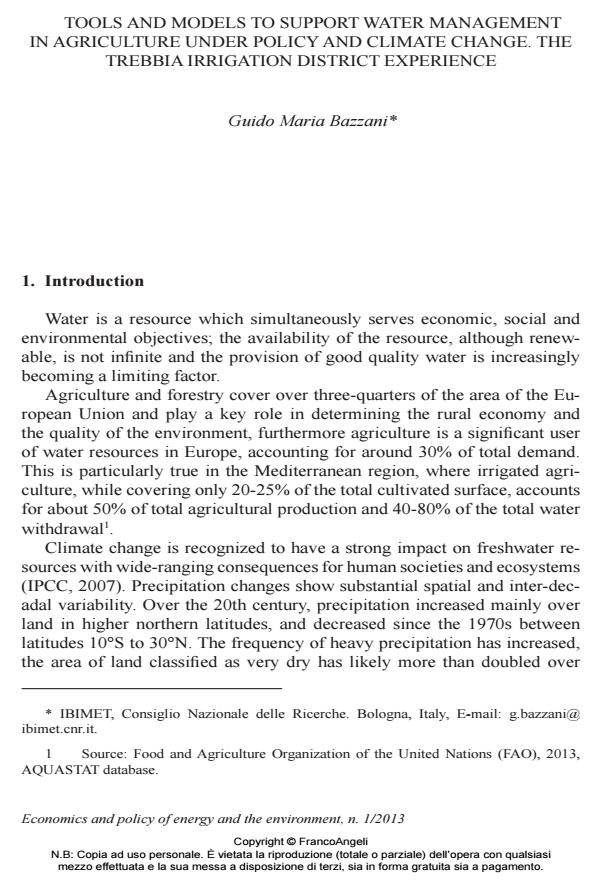Tools and models to support wa ter management in agriculture under policy and climate change. The Trebbia irrigation district experience
Journal title ECONOMICS AND POLICY OF ENERGY AND THE ENVIRONMENT
Author/s Guido Maria Bazzani
Publishing Year 2013 Issue 2013/1
Language English Pages 22 P. 125-146 File size 1268 KB
DOI 10.3280/EFE2013-001007
DOI is like a bar code for intellectual property: to have more infomation
click here
Below, you can see the article first page
If you want to buy this article in PDF format, you can do it, following the instructions to buy download credits

FrancoAngeli is member of Publishers International Linking Association, Inc (PILA), a not-for-profit association which run the CrossRef service enabling links to and from online scholarly content.
The Water Framework Directive (WFD) should guarantee the "good status" of nearly all European waters by the year 2015, the achievement of this ambitious goal is made more difficult by climate change which is recognized to have a strong impact on freshwater resources. Agriculture has been identified as a strategic sector and environmental objectives are progressively integrated into the reformed agricultural policy. The use of models and tools is recommended in the WFD to support the implementation process of the Directive. This paper first briefly clarifies the policy context, then considers tools and models applied in Italy to water management and agriculture. Recommendations are then presented on how tools should be used, taking the Trebbia irrigation district experience in the Po valley as an example, where a participatory process supports the Irrigation Board in preparing the water conservation plan.
Keywords: Decision Support, Model, Water, Agriculture, Policy, Climate change
Jel codes: Q15, Q16, Q25
Guido Maria Bazzani, Tools and models to support wa ter management in agriculture under policy and climate change. The Trebbia irrigation district experience in "ECONOMICS AND POLICY OF ENERGY AND THE ENVIRONMENT" 1/2013, pp 125-146, DOI: 10.3280/EFE2013-001007